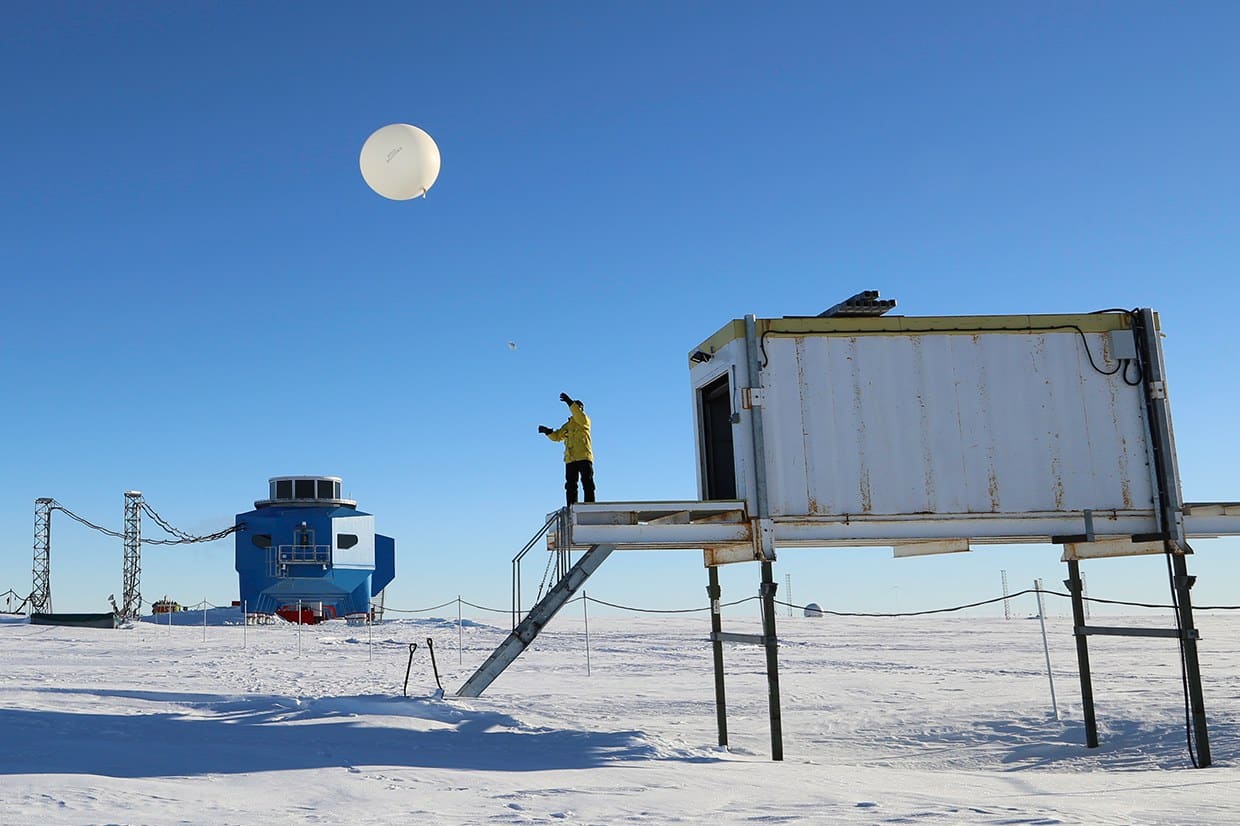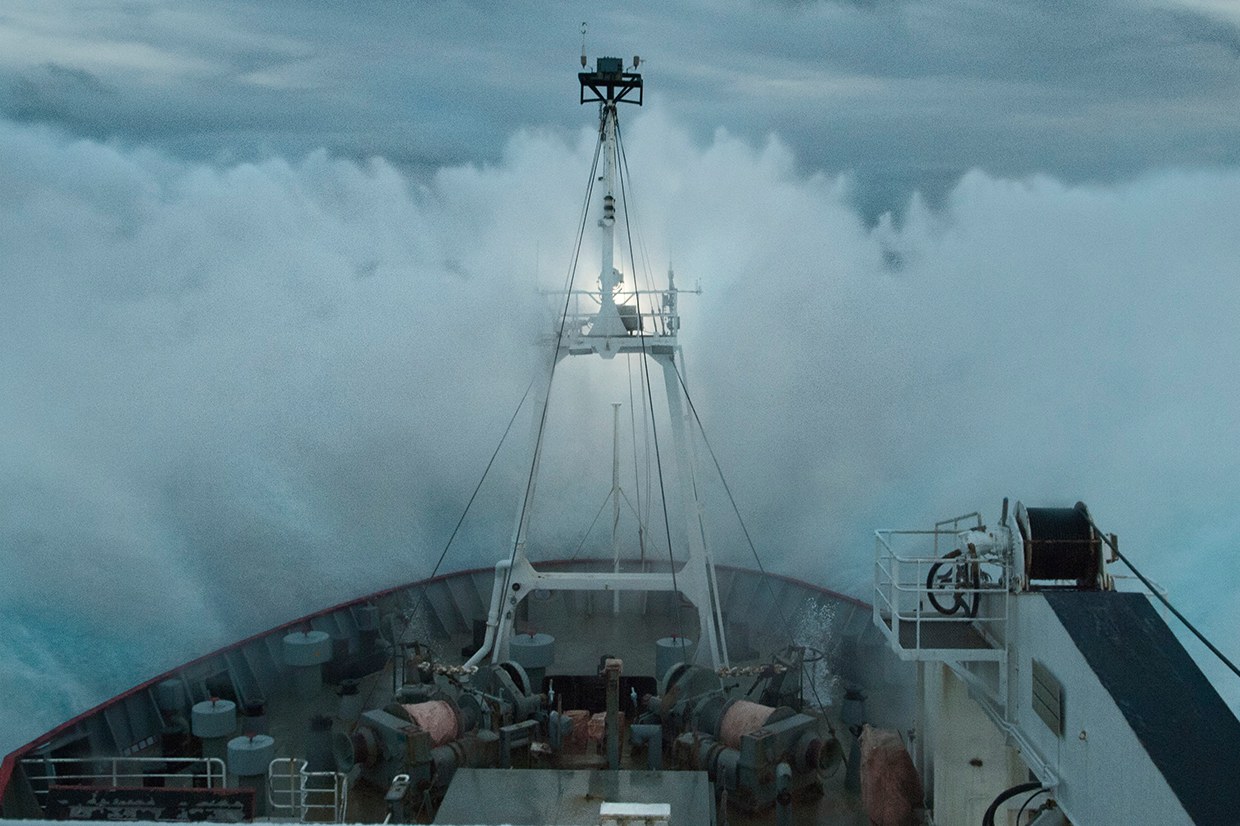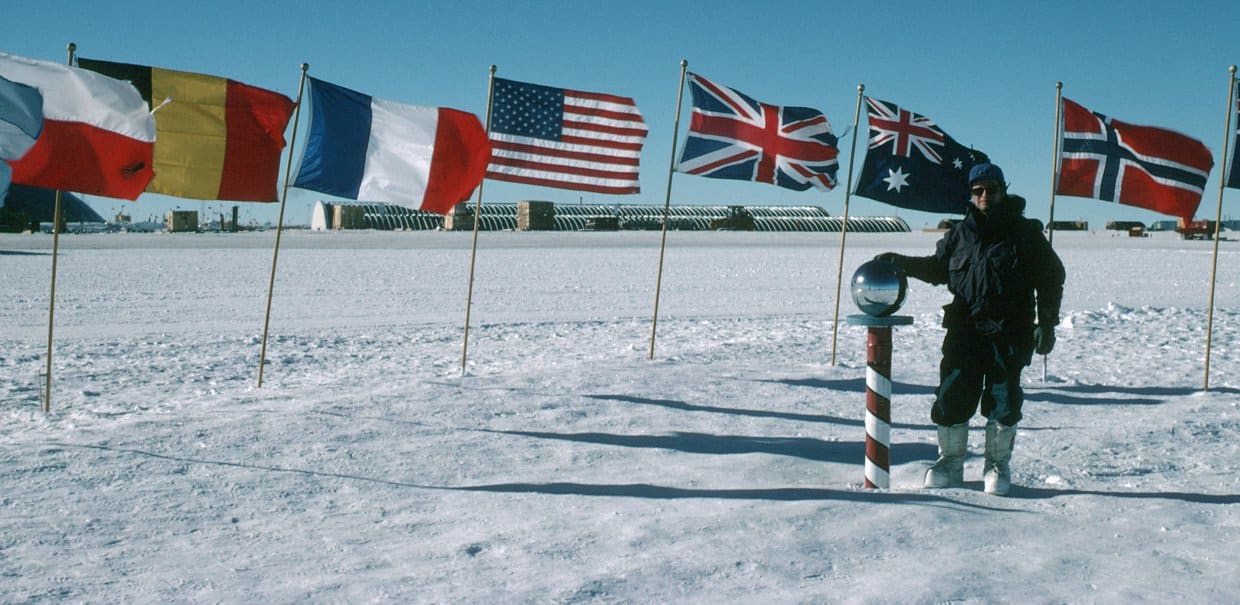
Antarctica’s climate: the key factors
What are the main characteristics of Antarctica’s climate, and what large-scale factors are responsible? Why is Antarctica’s climate colder than the climate of the Arctic?

Antarctica’s climate is also very windy and dry. Wind speeds vary across the continent and are discussed in Regional climate variation and weather; but the idea that Antarctica is a kind of desert requires some explanation here. The relative humidity of air at the South Pole is often as low as 0.03%, and the continent is a polar desert. This may at first seem surprising with 99% of its area being covered by ice; and Antarctica certainly doesn’t conform to the image that most people have of a desert. Yet, most of Antarctica is classed as a desert on the basis of its mean annual precipitation. What little precipitation there is mostly falls as snow, averaging less than 50mm a year (water equivalent) across much of the interior. This is in the ‘hyper arid’ category, shared with the Sahara, Namib, Atacama, and other great deserts of the world. The presence of so much ice despite such low precipitation is simply due to the fact that low temperatures cause even less ablation than accumulation (see Tectonic history: into the deep freeze and Ice sheets and glaciation for an account of the build up of the Antarctic Ice Sheet).
Although related, the terms climate and weather do have distinct meanings. This section focuses on the general climate characteristics of Antarctica as a whole, while the next section looks more specifically at regional differences in Antarctica’s climate and weather across the continent.
Q&A Climate or weather?
Match the following statements with the correct term (climate or weather) to review your understanding of the differences.
- Day to day variations in atmospheric conditions (temperature, humidity, precipitation, wind speed, sunshine etc.)
- Lowest temperature recorded at Vostok Station, 21 July 1983.
- Rothera Station mean annual temperature calculated by averaging 30 years of data.
- Days of high winds which slowed progress and caused Shackleton to abandon the 1907-09 expedition to the South Pole when within 100 miles of the destination.
- Globally averaged surface air temperature rise of 0.7°C over the past century.
- A strong low pressure system causing storms and rough seas in the Drake Passage.
- Air over the high East Antarctic plateau is very cold causing it to sink and create persistent high pressure over the polar region.
Answers
- Antarctica’s weather
- Antarctica’s weather
- Antarctica’s climate
- Antarctica’s weather
- Antarctica’s climate
- Antarctica’s weather
- Antarctica’s climate
Cold facts
Why is Antarctica’s climate so cold?
The coldness of Antarctica’s climate is the result of a combination of factors. As with the Arctic, Antarctica’s high latitude means that sunlight (insolation) hits the surface at a low angle (low angle of incidence), and this means that solar energy is spread over a larger area than would be the case if the sunlight hit the surface at a higher angle. By being spread over a larger area, the energy received per unit area (e.g. watts per m2) is reduced. Furthermore, southwards of the Antarctic Circle (66.56°S) there is a period during the austral winter when the sun does not rise above the horizon (the length of this period increases with increasing latitude). At the South Pole itself there is low angle sunlight continuously between September 21st and March 21st, and darkness during the other half of the year.
During the dark period in the austral winter, there continues to be heat output to space, but there is no insolation input. This causes temperatures to drop to their lowest point of the year. The fact that the air is very dry also means that relatively little of the heat given off by the ground is retained by the atmosphere. Due to the long day length of the austral summer, and the thin atmosphere over the high elevation ice sheet, a relatively high amount of insolation reaches the surface, despite the low angle of incidence. However, it imparts little heat to the surface because of the high reflectivity (albedo) of the snow and ice. This albedo causes up to 85% of the insolation to be reflected, thereby limiting the absorption of solar radiation at ground level and limiting the amount of warming that can occur during the summer months. The high elevation and high albedo of the East Antarctic Plateau limits heating so much that in this region there is little difference between summer and winter temperatures.
Why is Antarctica’s climate colder than the Arctic climate?
The low angle of incidence and large seasonal changes in the length of day and night also affect the Arctic (although at opposite times of the year); therefore, additional factors are needed to explain why Antarctica’s climate is colder.
These additional factors are related to the vastly differing geography and topography of the two areas: the Arctic is mainly ocean surrounded by land masses, whereas the land mass of Antarctica is surrounded by the Southern Ocean. Given the different heat capacities of land and sea (sea is much slower to both heat up and cool down), we would expect the coldest temperatures to occur at the pole that is dominated by land rather than sea. However this is only part of the story, and two other major effects need to be considered:
Differences in elevation
There is a high surface elevation across Antarctica because ice has built up on top of a large continental landmass. (By contrast, Arctic sea ice is floating and is only two or three metres thick.) Temperature declines with elevation due to the decrease in atmospheric pressure that occurs as height above sea level increases (this is the concept of adiabatic temperature decline). Therefore, on the basis of altitude, it is expected that temperature averaged across Antarctica will be lower than temperature averaged across the Arctic. While the Arctic does have some high elevation areas (e.g. on Greenland), these make up a small proportion of its total area.
Differences in heat transport
Both polar regions are cold because of low angle sunlight (along with periods of prolonged darkness) coupled with a high surface albedo. In relation to the energy balance of the whole planet, the polar regions are areas of energy deficit while the low latitudes are areas of energy surplus; however, the poles are not getting steadily colder and low latitudes steadily warmer. Instead, the Earth’s climate system transfers excess heat from low to high latitudes in various ways, for example through wind systems and ocean currents. However, the differing geography of the north and south polar regions leads to large differences in how this heat transport occurs.
One key difference lies in the nature of ocean circulation in the two hemispheres. The North Atlantic Ocean has a strong ‘meridional’ (north/south) circulation that delivers relatively warm water to high latitudes. The Gulf Stream and North Atlantic Drift Currents are the surface components of a much larger system (the thermohaline circulation) that includes deep water currents that flow back south along the ocean floor (see The coast and adjacent seas for a discussion of deep water currents). With the connection between the Atlantic and Arctic Oceans between Greenland and Scandinavia, warmer seas and moist air masses have a stronger influence at high latitudes of the Arctic compared with the Antarctic. An important effect of moist air masses originating over the North Atlantic Ocean (and the North Pacific) is that they release heat at high latitudes when the vapour they carry turns into ice crystals or liquid droplets in the atmosphere to form clouds (and sometimes precipitation). This process is referred to as the release of latent heat. It is interesting to note that the coldest recorded temperature in the Arctic (-67.8°C) was measured in an area far from the influence of the sea – at Verkhoyansk, north-east Siberia.
In contrast with ocean circulation in the Northern Hemisphere, the Antarctic Circumpolar Current (introduced in The coast and adjacent seas) is a more ‘zonal’ (west/east) system that circulates cold water clockwise around the continent, presenting a barrier to the more temperate ocean waters found northwards of the polar front. The heat that is transported into Antarctica is largely from low pressure systems that form out to sea between 60 and 65°S in an area known as the circumpolar trough. The large temperature difference between cold Antarctic air masses and mild maritime air masses from the mid-latitudes creates a frontal boundary in the atmosphere over the Southern Ocean that causes frequent storms to develop which move east and south-east due to the prevailing winds. Not only do these storm systems take moist air towards Antarctica, but they also account for the notoriously rough seas encountered in the Southern Ocean.

Why is Antarctica’s climate so dry?
There are multiple reasons for the aridity of Antarctica’s climate , most easily conceptualised as involving the combined effects of temperature, pressure, and ‘continentality’.
Cold air cannot hold as much water vapour as warm air: in fact the relationship between temperature and vapour holding capacity is an exponential one, so the ability of very cold Antarctic air to hold moisture is miniscule compared with the warmer air of lower latitudes. This in itself limits the quantity of precipitation that can fall on Antarctica because there is relatively little water vapour to begin with.
Precipitation is also limited by the influence of polar high pressure. In brief, high pressure is associated with dry climates whereas low pressure with wet climates. To understand why, we need to look more closely at the phenomenon of atmospheric pressure. Air has weight, and exerts pressure, because the gases making up the atmosphere are subject to the pull of Earth’s gravity. At sea level, the average air pressure is approximately one ‘bar’ (or 1000 millibars). However, the amount of pressure exerted on the surface by air is not equal everywhere because of differences in heating across the Earth. As a ‘parcel’ of air is heated, it becomes less dense than surrounding air, and rises in a way analogous to the uplift of a hot air balloon. In areas where air is rising (such as around the Equator), there is a reduction in the pressure of the atmosphere upon the surface (a region of low pressure). Cold air, on the other hand, is more dense than warm air so will sink towards the surface causing an increase in pressure (a region of high pressure). Because the poles are the areas of the globe that are heated least by the Sun, the air overlying the poles therefore descends towards the surface: this is the cause of polar high pressure. Air then moves away from the centre of high pressure forming prevailing winds that (under the influence of Earth’s rotation) move outwards towards the edges of the continent from east to west. These are the polar easterlies described further in the next section.
The link between pressure and precipitation is as follows: as air rises (causing lower pressure on the surface) it cools because of the pressure decline that occurs with increasing altitude. With cooling, the capacity of air to hold water vapour decreases (relative humidity increases); and, once the dew point temperature is reached, vapour condenses to form liquid droplets or, as is the case in cold climates, sublimates to form ice crystals. Clouds are formed, and if the cloud particles become large enough to have a downward force (mass ? gravitational acceleration) exceeding the force of air currents, precipitation will occur. On the other hand, if air is descending (high pressure on the surface) its temperature increases. This means that the vapour holding capacity increases, relative humidity decreases, and precipitation is less likely. It may seem paradoxical at first that polar high pressure is caused by the cold air sinking, while the sinking process itself causes the air to warm up. To put this in perspective however, dry air gains about 1°C on each 100m of descent. Given the extremely low temperatures of the lower atmosphere over Antarctica (often below -50°C), air remains very cold at surface level despite this adiabatic process.
Lastly, Antarctica’s aridity can also be explained in terms of its ‘continentality’. Being a large landmass, much of its terrain is far from the sea. In the austral winter, when sea ice expands over an area of the Southern Ocean larger than the area of the continent itself, moist maritime air masses are even more distant. As detailed in Regional climate variation and weather, there is a large difference in levels of precipitation near the coast compared with further inland. A further factor behind Antarctica’s aridity is the temperature of the Southern Ocean itself: sea surface temperatures below 3.5°C limit the amount of warming of overlying air and hence the amount of vapour that the air can carry and transport to Antarctica.
The following websites contain more information about polar climates:

Student activities
- Write up a short essay (or fact file) describing and explaining the general characteristics of Antarctica’s climate. Refer to values of temperature, humidity, precipitation, and surface air pressure in your write-up.
- Write a paragraph explaining why the South Pole is not the coldest place in Antarctica.
- Make a table summarising the similarities and differences between Antarctica’s climate and the climate of the Arctic.







